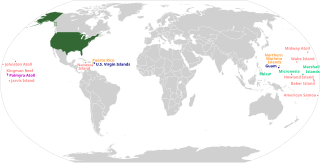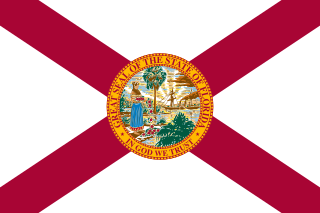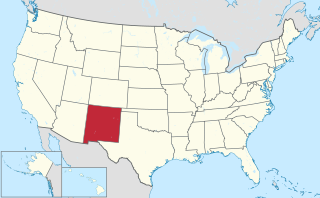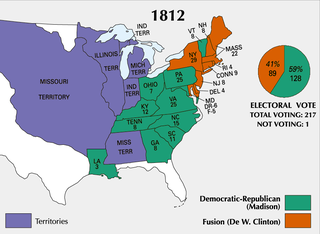1861 (MDCCCLXI) was a common year starting on Tuesday of the Gregorian calendar and a common year starting on Sunday of the Julian calendar, the 1861st year of the Common Era (CE) and Anno Domini (AD) designations, the 861st year of the 2nd millennium, the 61st year of the 19th century, and the 2nd year of the 1860s decade. As of the start of 1861, the Gregorian calendar was 12 days ahead of the Julian calendar, which remained in localized use until 1923.

The 51st state in American political discourse refers to the concept of granting statehood to one of the United States' territories, splitting one or more of the existing states up to form a new state, or granting statehood to the District of Columbia, thereby increasing the number of states in the Union from 50 to 51.

In the United States before 1865, a slave state was a state in which slavery and the internal or domestic slave trade were legal, while a free state was one in which they were prohibited. Between 1812 and 1850, it was considered by the slave states to be politically imperative that the number of free states not exceed the number of slave states, so new states were admitted in slave–free pairs. There were, nonetheless, some slaves in most free states up to the 1840 census, and the Fugitive Slave Clause of the U.S. Constitution, as implemented by the Fugitive Slave Act of 1793 and the Fugitive Slave Act of 1850, provided that a slave did not become free by entering a free state and must be returned to his or her owner.

Territories of the United States are sub-national administrative divisions overseen by the federal government of the United States. The various American territories differ from the U.S. states and Indian reservations as they are not sovereign entities. In contrast, each state has a sovereignty separate from that of the federal government and each federally recognized Native American tribe possesses limited tribal sovereignty as a "dependent sovereign nation." Territories are classified by incorporation and whether they have an "organized" government through an organic act passed by the Congress. American territories are under American sovereignty and, consequently, may be treated as part of the United States proper in some ways and not others. Unincorporated territories in particular are not considered to be integral parts of the United States, and the Constitution of the United States applies only partially in those territories.

In the United States, a state is a constituent political entity, of which there are 50. Bound together in a political union, each state holds governmental jurisdiction over a separate and defined geographic territory where it shares its sovereignty with the federal government. Due to this shared sovereignty, Americans are citizens both of the federal republic and of the state in which they reside. State citizenship and residency are flexible, and no government approval is required to move between states, except for persons restricted by certain types of court orders.

The following outline is provided as an overview of and topical guide to the U.S. state of Florida:

The following outline is provided as an overview of and topical guide to the U.S. State of New York:

The following outline is provided as an overview of and topical guide to the U.S. state of Ohio:

The following outline is provided as an overview of and topical guide to the United States Commonwealth of Pennsylvania:

The following outline is provided as an overview of and topical guide to Tennessee:

The following outline is provided as an overview of and topical guide to the U.S. state of Virginia:

The area currently occupied by the U.S. State of New Mexico has undergone numerous changes in occupancy and territorial claims and designations. This geographic chronology traces the territorial evolution of New Mexico.
Events from the year 1861 in the United States. This year marked the beginning of the American Civil War.

The following is a partial list of events from the year 1812 in the United States. After years of increasing tensions, the United States declares war on the British Empire, starting the War of 1812.

The 1763 Treaty of Paris ended the major war known by Americans as the French and Indian War and by Canadians as the Seven Years' War / Guerre de Sept Ans, or by French-Canadians, La Guerre de la Conquête. It was signed by Great Britain, France and Spain, with Portugal in agreement. Preferring to keep Guadeloupe, France gave up Canada and all of its claims to territory east of the Mississippi River to Britain. With France out of North America this dramatically changed the European political scene on the continent.
Admission to the Union is provided by the Admissions Clause of the United States Constitution in Article IV, Section 3, Clause 1, which authorizes the United States Congress to admit new states into the Union beyond the thirteen states that already existed when the Constitution came into effect. The Constitution went into effect on June 21, 1788, in the nine states that had ratified it, and the U.S. federal government began operations under it on March 4, 1789, when it was in effect in 11 out of the 13 states. Since then, 37 states have been admitted into the Union. Each new state has been admitted on an equal footing with those already in existence.















